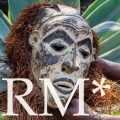After 1947, British India has broken up into three countries. This has implications for the restitution discourse.
The Indian government wants to sign an MOU with the USA ‘to make it easier to claim and repatriate objects taken decades or even hundreds of years ago’.
Many in the world of cultural heritage appear unaware that some of today’s great Western collections of Indian art – as well as foundational collections in Indian museums – are based on the magnificent collections originally formed by scholarly Indian collectors. While some colonial period British and other foreign collectors brought great Indian objects back to the West, the most important collectors were Indians themselves.
Indeed, the earliest major collections that formed the National Museum Collection in New Delhi came from private holdings, including those of B.N. Treasurywala, Eric Dickinson, Srinavasan Gopalachari, and Samarendra Nath Gupta.
At the time of independence, ASI Director Sir Mortimer Wheeler urged such acquisitions, saying, “One can’t build a National Gallery with a few broken stones and inscriptions. We must have colourful exhibits of pictures and paintings!”


